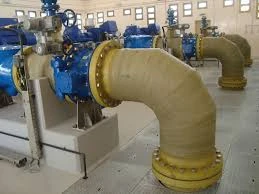
-
 Afrikaans
Afrikaans -
 Albanian
Albanian -
 Amharic
Amharic -
 Arabic
Arabic -
 Armenian
Armenian -
 Azerbaijani
Azerbaijani -
 Basque
Basque -
 Belarusian
Belarusian -
 Bengali
Bengali -
 Bosnian
Bosnian -
 Bulgarian
Bulgarian -
 Catalan
Catalan -
 Cebuano
Cebuano -
 China
China -
 China (Taiwan)
China (Taiwan) -
 Corsican
Corsican -
 Croatian
Croatian -
 Czech
Czech -
 Danish
Danish -
 Dutch
Dutch -
 English
English -
 Esperanto
Esperanto -
 Estonian
Estonian -
 Finnish
Finnish -
 French
French -
 Frisian
Frisian -
 Galician
Galician -
 Georgian
Georgian -
 German
German -
 Greek
Greek -
 Gujarati
Gujarati -
 Haitian Creole
Haitian Creole -
 hausa
hausa -
 hawaiian
hawaiian -
 Hebrew
Hebrew -
 Hindi
Hindi -
 Miao
Miao -
 Hungarian
Hungarian -
 Icelandic
Icelandic -
 igbo
igbo -
 Indonesian
Indonesian -
 irish
irish -
 Italian
Italian -
 Japanese
Japanese -
 Javanese
Javanese -
 Kannada
Kannada -
 kazakh
kazakh -
 Khmer
Khmer -
 Rwandese
Rwandese -
 Korean
Korean -
 Kurdish
Kurdish -
 Kyrgyz
Kyrgyz -
 Lao
Lao -
 Latin
Latin -
 Latvian
Latvian -
 Lithuanian
Lithuanian -
 Luxembourgish
Luxembourgish -
 Macedonian
Macedonian -
 Malgashi
Malgashi -
 Malay
Malay -
 Malayalam
Malayalam -
 Maltese
Maltese -
 Maori
Maori -
 Marathi
Marathi -
 Mongolian
Mongolian -
 Myanmar
Myanmar -
 Nepali
Nepali -
 Norwegian
Norwegian -
 Norwegian
Norwegian -
 Occitan
Occitan -
 Pashto
Pashto -
 Persian
Persian -
 Polish
Polish -
 Portuguese
Portuguese -
 Punjabi
Punjabi -
 Romanian
Romanian -
 Russian
Russian -
 Samoan
Samoan -
 Scottish Gaelic
Scottish Gaelic -
 Serbian
Serbian -
 Sesotho
Sesotho -
 Shona
Shona -
 Sindhi
Sindhi -
 Sinhala
Sinhala -
 Slovak
Slovak -
 Slovenian
Slovenian -
 Somali
Somali -
 Spanish
Spanish -
 Sundanese
Sundanese -
 Swahili
Swahili -
 Swedish
Swedish -
 Tagalog
Tagalog -
 Tajik
Tajik -
 Tamil
Tamil -
 Tatar
Tatar -
 Telugu
Telugu -
 Thai
Thai -
 Turkish
Turkish -
 Turkmen
Turkmen -
 Ukrainian
Ukrainian -
 Urdu
Urdu -
 Uighur
Uighur -
 Uzbek
Uzbek -
 Vietnamese
Vietnamese -
 Welsh
Welsh -
 Bantu
Bantu -
 Yiddish
Yiddish -
 Yoruba
Yoruba -
 Zulu
Zulu
frp pipeline
Understanding FRP Pipeline A Comprehensive Overview
In the realm of construction and infrastructure, the use of advanced materials is becoming increasingly critical. One such innovation is the development of Fiber Reinforced Polymer (FRP) pipelines. These pipelines are gaining significant attention across various industries, particularly in water and wastewater management, oil and gas, and chemical processing, owing to their exceptional properties and benefits.
Understanding FRP Pipeline A Comprehensive Overview
One of the most compelling advantages of FRP pipelines is their resistance to corrosion. In industries where pipelines are exposed to aggressive chemicals or harsh environmental conditions, the risk of deterioration is substantial. Traditional metal pipelines often succumb to rust or chemical degradation, leading to costly repairs and potential environmental hazards. In contrast, FRP pipelines can withstand a wide range of chemicals, making them ideal for transporting substances that would otherwise cause damage to standard materials.
frp pipeline

Another significant benefit is the lightweight nature of FRP. This property facilitates easier handling and installation, reducing labor costs and time on site. The lightweight aspect also means that structures supporting heavy pipelines can be less robust, further decreasing overall project costs. Additionally, the flexibility of FRP materials allows for versatile design options, enabling engineers to innovate and adapt pipelines to fit complex layouts or challenging terrains.
FRP pipelines are not only advantageous in terms of physical properties but also contribute positively to sustainability efforts. Their production typically requires less energy compared to traditional pipelines, and their long lifespan means they do not need to be replaced as frequently, further mitigating environmental impacts. Moreover, when FRP pipelines do reach the end of their lifecycle, they can be recycled and repurposed, aligning with modern waste management principles.
Despite the numerous benefits, it is crucial to acknowledge that FRP technology is not without its challenges. The initial costs can be higher than traditional materials, which may deter initial investment. Furthermore, the application of FRP requires specialized knowledge and handling, as improper installation can compromise the integrity of the pipeline. Educational initiatives and training programs are becoming essential in overcoming these barriers and ensuring successful implementation.
In conclusion, FRP pipelines represent a significant advancement in the field of materials engineering and infrastructure development. Their corrosion resistance, lightweight nature, and sustainability make them a compelling choice for various applications. As industries continue to strive for increased efficiency and environmental responsibility, the adoption of FRP technology is likely to grow, solidifying its role in modern pipeline construction. Embracing these innovations not only supports economic growth but also promotes a sustainable future, paving the way for better infrastructure solutions worldwide.









